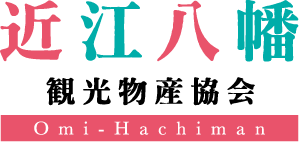Sagicho Festival
The Sagicho Festival is a colorful and dramatic celebration with more than four centuries of history, held annually in Omihachiman to mark the start of spring. The festival features parades of brightly decorated floats, trials of strength in which floats are pushed against each other, and a fiery climax when the floats are burned as offerings to the deities. The festival, which has been named a National Intangible Folk Cultural Property, takes place over two days on the weekend closest to March 15.
A history of hardship
The history of Omihachiman’s Sagicho Festival stretches back to the sixteenth century. The festival is thought to have been started on the initiative of Oda Nobunaga (1534–1582), a warlord who by 1579 was on his way to conquering the entire country. In that year, Nobunaga celebrated the completion of Azuchi Castle, his new stronghold, by organizing a festival in the castle town of Azuchi. The warlord himself is said to have dressed up and danced among his people in a flamboyant costume. However, Nobunaga was killed in 1582, before he could establish a stable government. Azuchi Castle was destroyed, and the people of Azuchi moved to the nearby town of Hachiman (now Omihachiman). The newcomers asked to participate in the festival of the local shrine but were refused. This led them to revive the Sagicho Festival from their old home.
Sagicho festivals are held throughout Japan in January and usually involve burning New Year’s decorations on a bonfire to bid farewell to the deities that were believed to visit homes carrying blessings for the holiday season. The Sagicho festival started by Nobunaga and celebrated in Omihachiman was originally held in the first month of the lunar calendar, which is early spring in the solar calendar. The festival date was fixed to March after Japan adopted the solar calendar in the late nineteenth century.
Food for show
The Sagicho Festival centers on the sagicho floats after which the celebration is named. The base of this type of float is a pyramid-shaped torch made of wood and rice straw stacked to about 3 meters in height. Its top is decorated with red paper streamers—believed to ward off fire—and ornaments that symbolize good fortune, such as fans, paper balls, purses, and dice. The main decorative part of the float is called dashi and is attached to the front of the torch. The dashi features a conspicuous figure of the year’s Chinese zodiac animal. Poles are run through the straw base to form a framework bound with rope so that the float can be carried, and the whole construction is about 8 meters high.
One notable characteristic of the dashi is that they are made entirely out of edible materials. Traditionally the decorations were fashioned using grains, beans, and dried marine products such as fish flakes and kelp, but in recent years, floats have also featured products such as corn flakes, pasta, and chewing gum. The use of food symbolizes gratitude for the previous year’s harvest and a prayer for a successful crop in the current year. Reproductions of the decorations are displayed for the rest of the year at the Omihachiman Heritage Museum and in the Former Ban House.
Chants, fights, and pink mohawks
The festival begins on Saturday at 1 p.m. when floats from 13 of the town’s districts are assembled at Himure Hachimangu Shrine. There, they are judged in a competition before being paraded through the old town. Each one of the floats weighs around 500 kilograms and is carried by some 30 odoriko, or “dancers.” To cheer each other on, the odoriko chant “Choyare! Choyare!” and “Masse! Masse!” Choyare is short for sagicho sashiage or “raise the sagicho” and masse is short for sagicho meshimase or “bring (forth) the sagicho.” Some odoriko dress up in flamboyant clothing, wear gaudy makeup, and dye their hair in bright colors. In this they are said to be carrying on the extravagant taste of Oda Nobunaga. Once the parade finishes around 5 p.m., the floats are returned to the shrine and the winners of the competition are announced.
On the second day, the floats are paraded from the morning, and trials of strength called kenka, or “fights,” are held at the shrine. In these, the floats of two opposing groups push against each other until one float falls over. The kenka are said to be a way for the neighborhoods to demonstrate their strength and pride to the deities, but their origins are thought to lie in the confrontations that inevitably arose in the past when float-carrying groups sought to get by each other on the town’s narrow streets. The festival nears its climax at 8 p.m., when the floats are once again gathered at the shrine, the carrying poles are removed, and the floats are burned as an offering to the deities. This act also serves as a prayer for protection against fire. Participants dance around the fires until they burn out at around 11 p.m., after which the festival formally ends with a sacred dance performed by young women who serve at the shrine.
Everyone’s involved
Today the Sagicho Festival is an expression of both community pride and Omihachiman’s mercantile heritage: each float is made and carried by residents of a specific neighborhood, and the flamboyant appearance and large scale of the floats were historically made possible by the wealth of the town’s merchant families. Preparations for creating the floats begin every New Year, with residents cooperating to cover costs and split the workload. Together they share the joy and pride in creating the floats, and together they burn them as a prayer for continued good health and ample harvests. The preparations foster a sense of community spirit, and the fiery climax is an emotional tribute to those who passed the festival down to them.



























